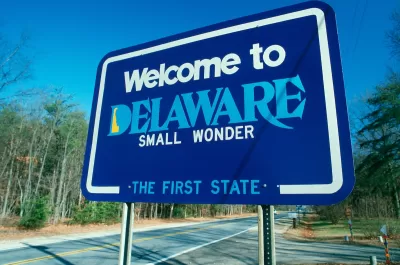An emergency shelter has become a hub for social services and support for hundreds of unhoused residents.

A Delaware housing complex originally built as emergency shelter could offer a useful model as an “ecosystem of care,” writes Frances Nguyen in a Shelterforce article republished in Next City. “In addition to offering case management and mental health services on site, the center took advantage of its space to accommodate a full medical practice—run by ChristianaCare, the state’s largest hospital system—on one of its floors.”
The Hope Center is one of the largest shelters on the East Coast, with 185 available rooms and roughly 360 clients on any given night. According to Nguyen, “The center has partnerships with local groups to support those families that have school-aged children—including with a network of charter schools in the area, who refer families enrolled in their schools and pay for up to a 90-day stay for them—as well as with the Delaware Division of Family Services, which serves families at risk of losing their children due to their homelessness.”
The housing is pet-friendly and also offers on-site veterinary services, the only shelter in Delaware to do so. And while it primarily serves as an emergency shelter, some residents have lived there for over a year. To assist these residents, the shelter just opened its first supportive housing units, which will occupy two floors of the building and house veterans and people classified as “chronically homeless.”
As Nguyen explains, “Part of the Hope Center’s mission is to not only challenge society’s perception of who the most vulnerable members of their community are, but also to imagine a different approach to tackling homelessness—one that is humane and dignified, and applies resources where they’re most needed.”
FULL STORY: What Started as Emergency Housing Could Offer a Model for Ending Homelessness in Delaware

Study: Maui’s Plan to Convert Vacation Rentals to Long-Term Housing Could Cause Nearly $1 Billion Economic Loss
The plan would reduce visitor accommodation by 25,% resulting in 1,900 jobs lost.

North Texas Transit Leaders Tout Benefits of TOD for Growing Region
At a summit focused on transit-oriented development, policymakers discussed how North Texas’ expanded light rail system can serve as a tool for economic growth.

Using Old Oil and Gas Wells for Green Energy Storage
Penn State researchers have found that repurposing abandoned oil and gas wells for geothermal-assisted compressed-air energy storage can boost efficiency, reduce environmental risks, and support clean energy and job transitions.

Santa Barbara Could Build Housing on County Land
County supervisors moved forward a proposal to build workforce housing on two county-owned parcels.

San Mateo Formally Opposes Freeway Project
The city council will send a letter to Caltrans urging the agency to reconsider a plan to expand the 101 through the city of San Mateo.

A Bronx Community Fights to Have its Voice Heard
After organizing and giving input for decades, the community around the Kingsbridge Armory might actually see it redeveloped — and they want to continue to have a say in how it goes.
Urban Design for Planners 1: Software Tools
This six-course series explores essential urban design concepts using open source software and equips planners with the tools they need to participate fully in the urban design process.
Planning for Universal Design
Learn the tools for implementing Universal Design in planning regulations.
Ascent Environmental
Borough of Carlisle
Institute for Housing and Urban Development Studies (IHS)
City of Grandview
Harvard GSD Executive Education
Toledo-Lucas County Plan Commissions
Salt Lake City
NYU Wagner Graduate School of Public Service





























